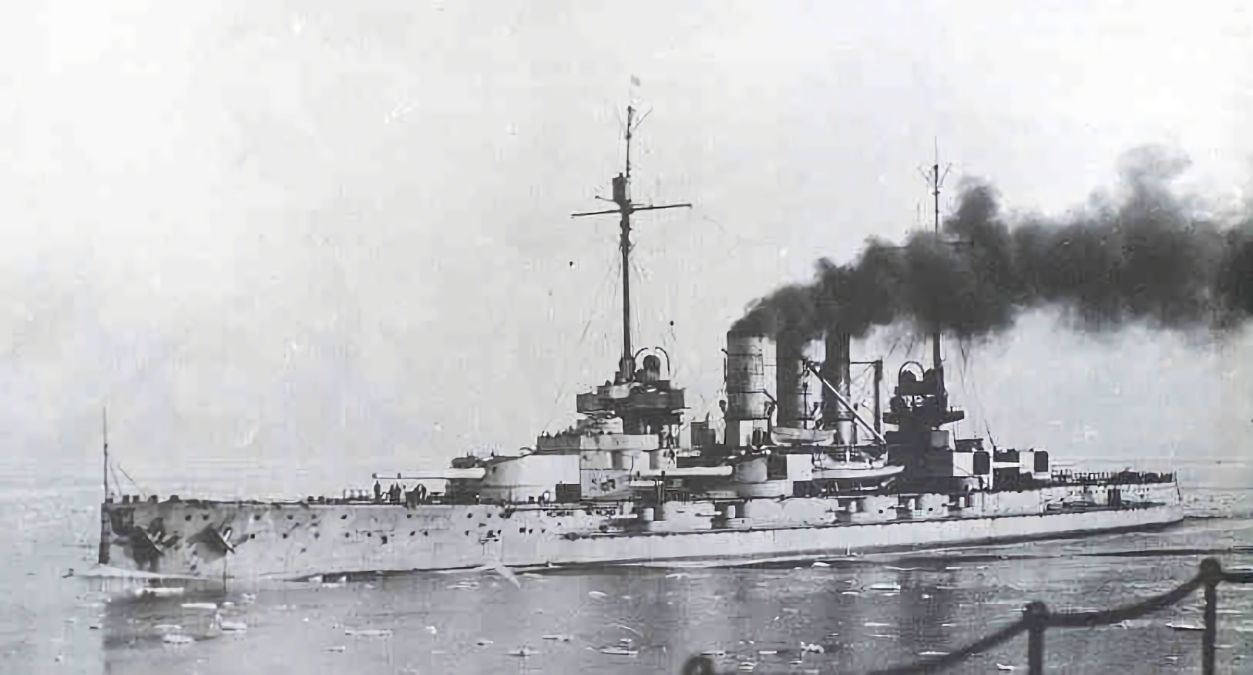German Battleship SMS Ostfriesland
SMS Ostfriesland was the second vessel of the Helgoland class of dreadnought battleships of the Imperial German Navy. Named for the region of East Frisia, Ostfriesland’s keel was laid in October 1908 at the Kaiserliche Werft dockyard in Wilhelmshaven. She was launched on 30 September 1909 and was commissioned into the fleet on 1 August 1911. The ship was equipped with twelve 30.5 cm (12 in) guns in six twin turrets, and had a top speed of 21.2 knots (39.3 km/h; 24.4 mph). Ostfriesland was assigned to the I Battle Squadron of the High Seas Fleet for the majority of her career, including World War I.
Along with her three sister ships, Helgoland, Thüringen, and Oldenburg, Ostfriesland participated in all of the major fleet operations of World War I in the North Sea against the British Grand Fleet. This included the Battle of Jutland on 31 May – 1 June 1916 and action in the Baltic Sea against the Russian Navy. She was present during the unsuccessful first incursion into the Gulf of Riga in August 1915.
After the German collapse in November 1918, most of the High Seas Fleet was interned in Scapa Flow during the peace negotiations. The four Helgoland-class ships were allowed to remain in Germany, however, and were therefore spared the destruction of the fleet in Scapa Flow. Ostfriesland and her sisters were eventually ceded to the victorious Allied powers as war reparations; Ostfriesland was transferred to the United States Navy. She was sunk during air power trials off the Virginia Capes in July 1921.
Photographs of SMS Ostfriesland
- SMS Ostfriesland
- SMS Ostfriesland in US Custody
- Torpedo Tube Detail
- SMS Ostfriesland used in Bombing Trials
SMS Ostfriesland







SMS Ostfriesland in US Custody










Torpedo Tube Detail









SMS Ostfriesland used in Bombing Trials










